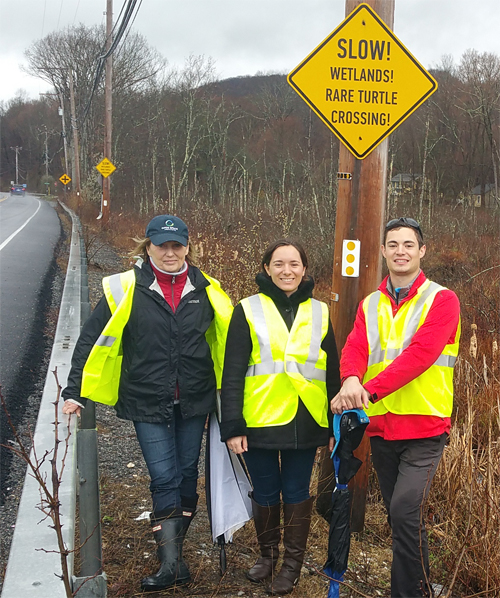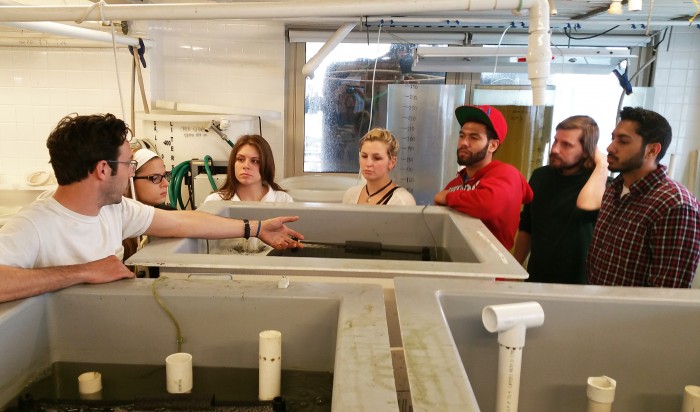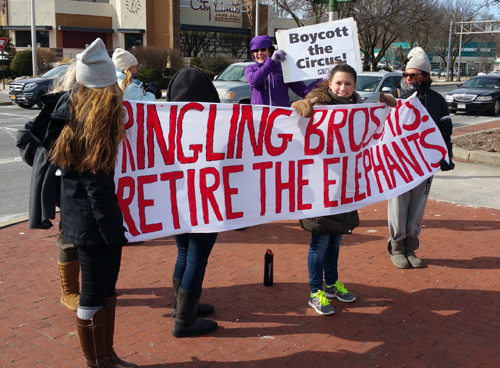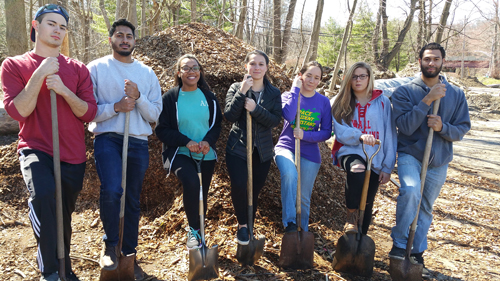By Tom Wilber
Editor’s Note: A centerpiece of President Obama’s 2012 State of the Union Address was his aggressive support of “shale gas development” or fracking, hydraulic fracturing for gas. He has remained unwavering. So, it is no surprise that the promise of protests overshadowed his campaign-style education tour through upstate New York, 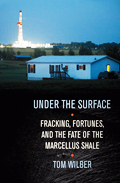 an epicenter of fracking opposition. Tom Wilber’s coverage of fracking in the Marcellus and Utica shale states of Pennsylvania and New York is without peer. His book, Under the Surface: Fracking, Fortunes, and the Fate of the Marcellus Shale (Cornell University Press) is remarkable on-the-ground reporting of the drama, and heartbreak, that fracking has brought to people, communities, and the environment.
an epicenter of fracking opposition. Tom Wilber’s coverage of fracking in the Marcellus and Utica shale states of Pennsylvania and New York is without peer. His book, Under the Surface: Fracking, Fortunes, and the Fate of the Marcellus Shale (Cornell University Press) is remarkable on-the-ground reporting of the drama, and heartbreak, that fracking has brought to people, communities, and the environment.
Tom’s work continues with his excellent blog, Shale Gas Review, where this article first appeared. Looking ahead, he tells EarthDesk the implications of fracking for water,”will begin to factor more heavily into the national equation, with huge policy and ecological implications for drought areas yet-to-be developed.” Here, Tom provides us with a primer on the politics and perils of fracking, as the controversy, and public awareness, spread from coast to coast. More on Tom at the end of the post. — John Cronin
With President Obama’s support of shale gas development – encouraging exports while preserving regulatory exemptions – the momentum of an onshore drilling bonanza is growing from a regional to a national story.
High volume hydraulic fracturing as a means to extract oil and gas from shale was discovered and refined in Texas and recently adapted to tap shale basins in Pennsylvania, Ohio, Illinois, Oklahoma, Alabama, Colorado, Arkansas, North Dakota and other places. Drilling is pending in New York and California, both of which sit over world class shale reserves now accessible through fracking. The trend will likely accelerate as Obama encourages plans to use fracking to turn U.S. shale reserves into a global commodity – a move that will raise prices, increase markets and encourage more exploration. At the same time, his EPA has shown a disinclination to interfere with a patchwork of state regulations, some stronger than others, to oversee the industry, or to advocate the repeal of industry exemptions – enacted under Ronald Regan and George W. Bush — from hazardous waste laws and the Safe Drinking Water Act.
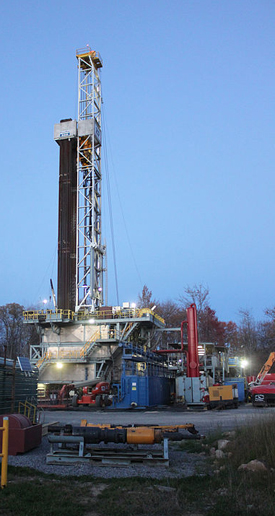
Drill rig , drilling a Marcellus Shale well in State Game Lands, Roulette, Pennsylvania. By Laurie Barr [CC-BY-SA-3.0 or GFDL], via Wikimedia Commons
As recently reported by Mike Soraghan of Energy Wire, drilling increased 40 percent while spills, blowouts and other mishaps rose 17 percent from 2010 to 2012 in states where comparable data was available. While arriving at these numbers, Soraghan ran into a problem encountered by many journalists seeking to quantify impacts of petroleum production – a scarcity of records and documentation due to lack of standards and enforcement. He reported:
There are no national figures on oil and gas spills or enforcement. But where state records are available, they show agencies pursue fines against oil and gas producers in only a small minority of spill cases. The Wyoming Department of Environmental Quality pursued water quality fines against 10 producers in 2012, records show, as it recorded 204 oil and gas production spills. In Texas, the leading producer of oil and gas, regulators sought enforcement for 2 percent of the 55,000 violations identified by drilling inspectors in the last fiscal year. In Pennsylvania, the heart of the Marcellus Shale gas drilling boom, 2012 records show state regulators levied fines in 13 percent of the cases where inspectors found violations. And in New Mexico, oil and gas regulators haven’t issued fines in years.
Some spills are reported and some spills go unreported. There are also unknown numbers that get reported but not in a way that is easily accessible. State agencies rely on industry reports to compile spill data. These files tend to be decentralized and many lack searchable data bases. Through my own research in writing Under the Surface, I found that companies are routinely cited for failing to file reports. It’s something regulators often characterize as minor “paperwork” violations, but it really cuts to the heart of the public disclosure controversy.
The industry is exempt from federal regulations that require a cradle to grave accounting of hazardous chemicals used to extract gas from wells
In Texas, officials promote a “compliance-based” approach, Soraghan reports. “Commission inspectors place a premium on helping drillers get back into compliance with the rules rather than hitting them with fines.” It’s a regulatory style that regulators defend over a more aggressive “rules-based system,” which, they say, will make drilling no safer or more environmentally friendly. Oklahoma has a similar approach. When an inspector followed up on a spill of 300,000 gallons of oil and wastewater into pastureland, he logged this: “Reinspected spill area. Found spill has been cleaned up. Looks OK. Please close incident. No further action anticipated.”
States such as California, which sit over relatively unexplored reserves, are still waking up to local, regional and global implications of oil and gas development in the shale era. The Monterey Shale extends under some 1,750 square miles of California. Fracking is suddenly a hot topic in the state with an identity historically tied to both resource extraction and environmental protection.
The effectiveness and merits of the current regulatory system relies heavily on voluntary disclosure and self-policing by the industry, and an abiding culture in state regulatory bodies. The industry is exempt from federal regulations that require a cradle to grave accounting of hazardous chemicals used to extract gas from wells. With no national baseline for handling toxic waste through the Resource Conservation and Recovery Act, industry has sought to ease public concerns and criticism by teaming with non-profit groups, such as the Center for Sustainable Shale Gas Development and the Environmental Defense Fund, to develop “best practices,” including waste disclosure protocols. It’s an approach that has engendered skepticism in those who believe it serves more as PR cover than an effective right-to-know tool.
Often, the conversation is framed in the context of those for or against shale development, along with testimony from winners and losers. In an attempt to frame this more comprehensively, I offer these these reference points. In a sense, issues begin with gas companies, investors, and speculators competing to capitalize on U.S. shale resources, and they end with energy consumers and ratepayers in residential and manufacturing sectors, nationally and globally, sensitive to price.
Caught in the middle is a mind-numbing collection of public and private interests: Property owners who want to lease or don’t want to lease their land, residents and business owners who will shoulder costs or reap benefits of development; residents in the larger region affected by development; local governments, state, and regional entities dealing with community impact issues; federal agencies representing interests including stewardship of public lands, natural resources, and matters of energy, economics and climate; environmental activists and their lobbies; industry advocates and their lobbies; unions, workers and contractors concerned about job creation and occupational risks…
On and on.
The demands for information from each group will vary, and they are complicated by varying value sets, ideology and interpretations. There are stakeholders sympathetic to industry’s position that regulations threaten national independence, free-enterprise, and jobs. And there are those who see regulation (without exemptions) as an essential public safeguard for an industry that extracts wealth from other people’s land using large volumes of hazardous chemicals.
«« »»
 Tom Wilber’s Under the Surface, Fracking Fortunes and the Fate of the Marcellus Shale (Cornell University Press) was recently selected as a finalist in the 2013 New York Public Library’s Helen Bernstein Book Award for Excellence in Journalism. His career as a journalist encompasses more than 20 years in the newspaper business, including 17 years with the Binghamton Press & Sun-Bulletin, covering business, health, and environment beats. He has reported on shale gas development in New York and Pennsylvania since 2008.
Tom Wilber’s Under the Surface, Fracking Fortunes and the Fate of the Marcellus Shale (Cornell University Press) was recently selected as a finalist in the 2013 New York Public Library’s Helen Bernstein Book Award for Excellence in Journalism. His career as a journalist encompasses more than 20 years in the newspaper business, including 17 years with the Binghamton Press & Sun-Bulletin, covering business, health, and environment beats. He has reported on shale gas development in New York and Pennsylvania since 2008.
Tom was among the first reporters to provide daily coverage of events in Dimock Pennsylvania, which have since become iconic of the national controversy over fracking. For that, he won top honors in Best of Gannett beat reporting in 2010. He left the newspaper in 2010 to write full time about shale gas development. He now tracks current events related to shale as development in his blog, Shale Gas Review. He has taught various journalism courses as an adjunct at Binghamton University.




